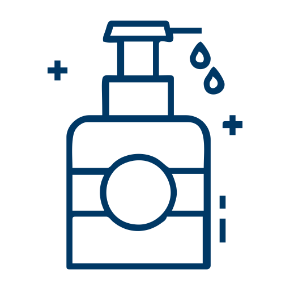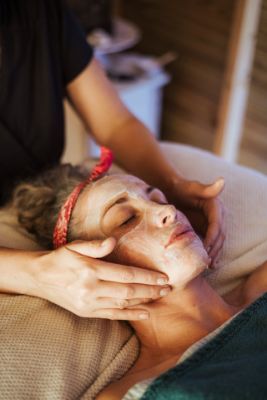Skin exfoliation is a simple technique that dates back all the way to ancient Egypt — and it is still the key to a vibrant, healthy complexion. It involves sloughing away dirt and dead skin cells to reveal a fresh, radiant layer of new skin underneath. There's no shortage of exfoliating products to choose from, so it's important to consider how different exfoliants can affect your skin. If your skincare routine is looking a little rough around the edges, here is why rounding it out with exfoliation is a great place to start.
So, what is skin exfoliation?
The epidermis, or the outermost layer of your skin, is made up of five sublayers. New skin cells are born in the deepest layer. As these cells mature, they travel up to the top layer. From there, they typically shed away naturally, allowing fresher, plumper and more evenly pigmented skin to emerge.
Healthy skin sheds an incredible 30,000 to 40,000 dead cells per minute, but this is often slowed down by a number of factors such as sun exposure, hormonal fluctuations and aging. When the shedding process is delayed, dead cells start piling up on the skin, leaving it looking rough and dull. If they sit for too long, they may even clog your pores — which can lead to everything from blemishes to fine lines.
Enter exfoliation, which whisks away dead cells and brings fresh skin to the surface. As an added bonus, it also allows other skincare products to work more effectively!
Physical or Chemical: How to choose your exfoliator?
Exfoliating products currently fall into two categories: physical and chemical. Physical exfoliators manually scrub away dead skin from the skin's topmost layer using abrasive ingredients like sugar, microbeads, rice bran powder or jojoba seeds. The scrubbing action boosts microcirculation and lymphatic drainage, leaving you with a fresh, glowing complexion.
While the treatment offers a dose of instant gratification, it does come with a caveat: If your product's exfoliant is made up of jagged particles or you scrub too vigorously while exfoliating, a physical exfoliator might leave your skin with microtears rather than a glowing complexion. You can avoid these issues by choosing products with smooth, round granules and treating your skin gently as you exfoliate.
Chemical exfoliators, on the other hand, work by breaking down the intercellular "glue" that holds dead skin cells together. Once these bonds dissolve, the dead cells fall away, allowing newer skin to surface.
While they may sound daunting, chemical exfoliators can be surprisingly gentle — they often feature low levels of natural, food-derived acids and enzymes. Keep an eye out for alpha-hydroxy acid exfoliants like lactic acid (found in sour milk), glycolic acid (from sugar cane) and tartaric acid (from grapes). Skin that's oily or prone to enlarged pores or blemishes will do well with salicylic acid — an oil-soluble beta hydroxy acid that can penetrate through pore-clogging debris. For boosted cell turnover and resurfacing, Neoglucosamine is a chemical exfoliant that hydrates skin while reducing hyperpigmentation — a two-for-one ingredient.
As an added bonus, chemical exfoliants do not require any scrubbing on your part, which allows it to penetrate into skin's deeper layers and boost cellular turnover without requiring the friction that could upset sensitive skin.
Mapping the Zones of Your Face
Do you have an oily T-zone or enlarged pores? Do you experience chronic spots on the sides of your nose? More powerful exfoliating products can come in handy when it comes to problem zones — or you can simply exfoliate those areas more often!
On the other hand, eyes and lips have extremely fragile skin. It's a good idea to skip exfoliating these areas unless you are using a product that's specifically made for this delicate tissue.
It is possible to over-exfoliate
As with most things in life, moderation is key. After all, there are only so many dead cells to slough away! Going overboard and overexfoliating can disrupt your skin's natural barrier, causing irritation, inflammation and breakouts. It could also make you more vulnerable to sun damage and moisture loss. So, start slowly and gradually work your way up to exfoliating two or three times a week. The key is to watch how your skin reacts and go from there. Finally, remember that freshly exfoliated skin is more fragile and needs to be protected with a good moisturizer and sunscreen.







